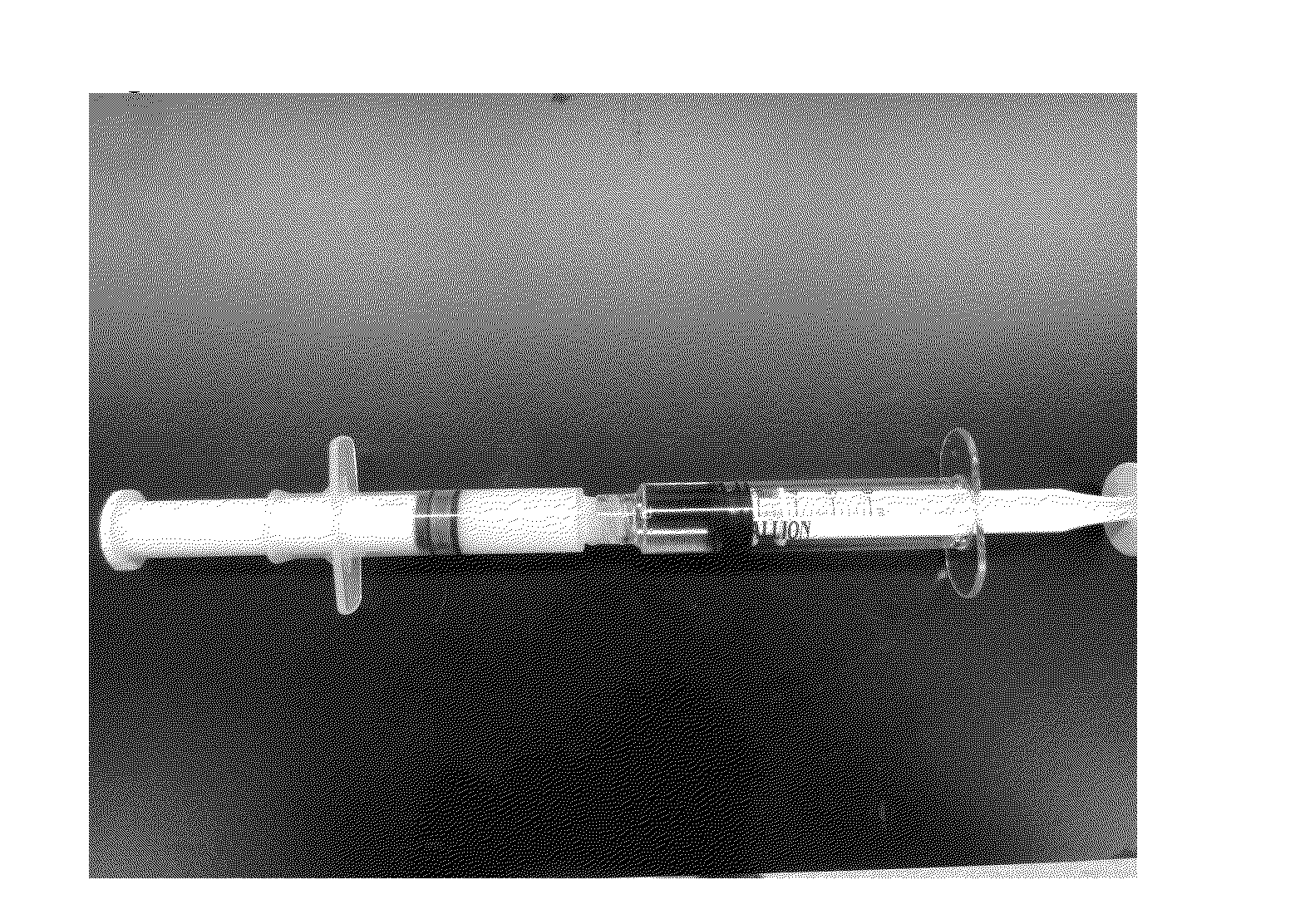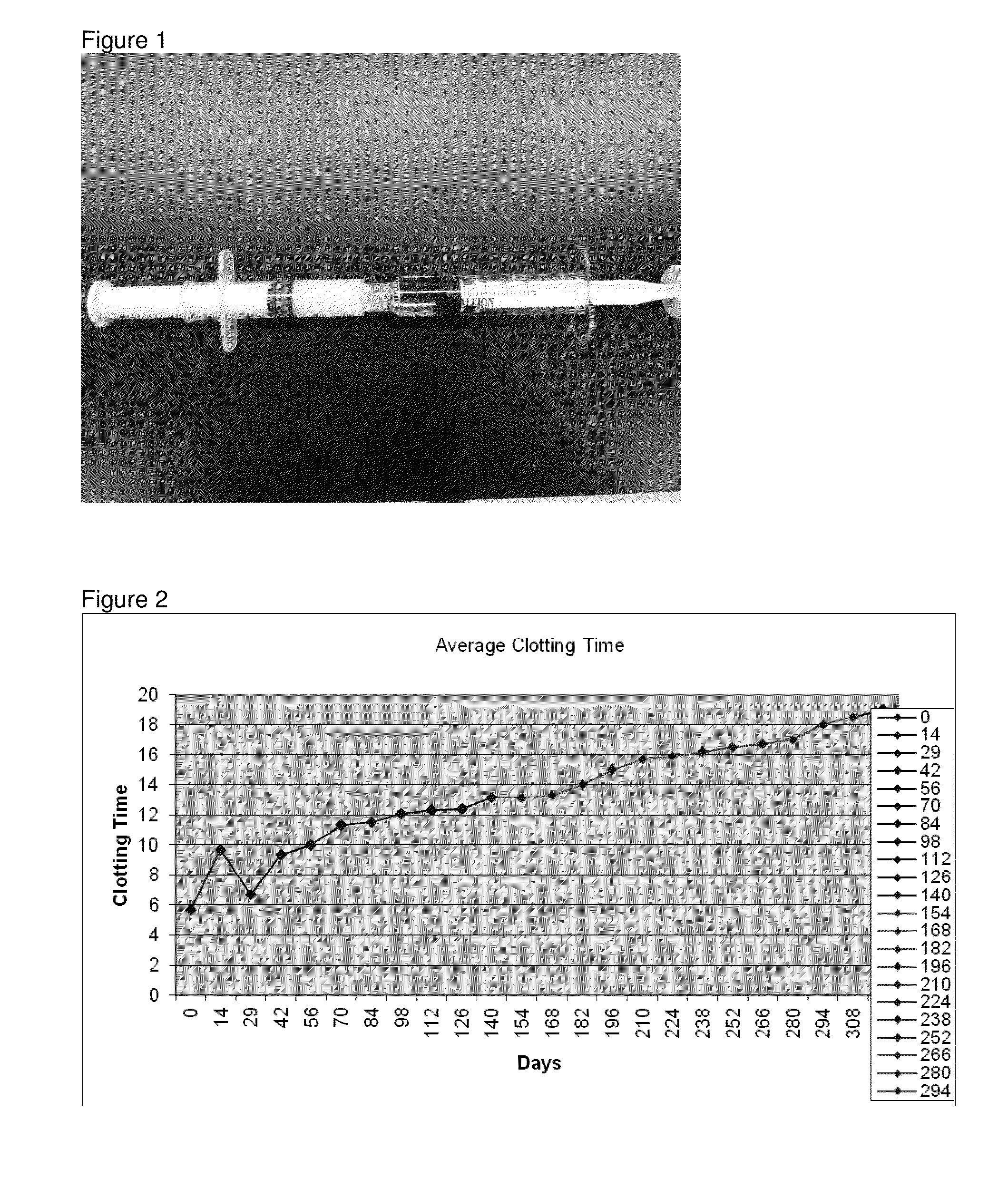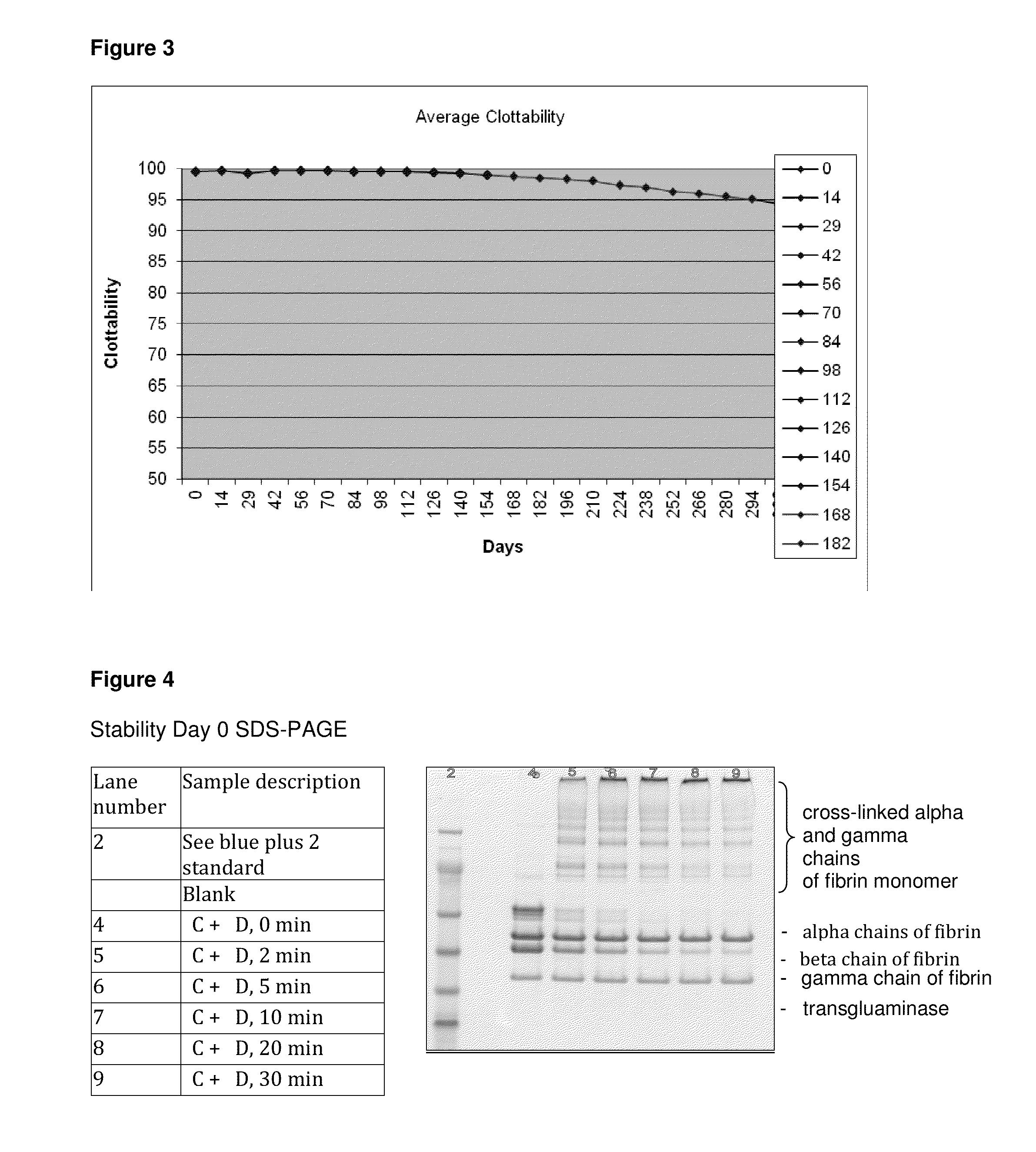Single Component Fibrin Hemostat
a single-component, fibrin hemostat technology, applied in the direction of fibrinogen, extracellular fluid disorder, peptide/protein ingredients, etc., can solve the problems of inability to form a sufficiently strong bond to tissues, inflammatory effects, immunological responses,
- Summary
- Abstract
- Description
- Claims
- Application Information
AI Technical Summary
Benefits of technology
Problems solved by technology
Method used
Image
Examples
examples
[0034]The adhesion characteristics to vital human tissue, the kinetics of polymerization of the gel, biocompatibility, stability and clotting efficacy tests show that ClotGel sealant forms a strong fibrin clot within 1 minute of application over a bleeding wound. The agent is biocompatible, has a 180 days stability, and adheres to lacerated tissue binding the opposing tissues together with a strength that is significantly higher than that observed for other tested fibrin sealants. The following tests were conducted in vitro and in vivo (rat, rabbit and swine models).
1. Molecular Chemistry of Fibrin Polymerization
[0035]We conducted molecular chemistry assays to: 1) Establish the clotting time; 2) Determine the clotability of the fibrin monomer within the ClotGel Mix; and 3) compared the effectiveness of fibrin monomer polymerization (pH Neutralization) and stabilization (cross-linking) by activated Factor XIII versus stabilization by Factor XIII and calcium-independent tranglutaminas...
PUM
| Property | Measurement | Unit |
|---|---|---|
| concentration | aaaaa | aaaaa |
| pH | aaaaa | aaaaa |
| pH | aaaaa | aaaaa |
Abstract
Description
Claims
Application Information
 Login to View More
Login to View More - R&D
- Intellectual Property
- Life Sciences
- Materials
- Tech Scout
- Unparalleled Data Quality
- Higher Quality Content
- 60% Fewer Hallucinations
Browse by: Latest US Patents, China's latest patents, Technical Efficacy Thesaurus, Application Domain, Technology Topic, Popular Technical Reports.
© 2025 PatSnap. All rights reserved.Legal|Privacy policy|Modern Slavery Act Transparency Statement|Sitemap|About US| Contact US: help@patsnap.com



